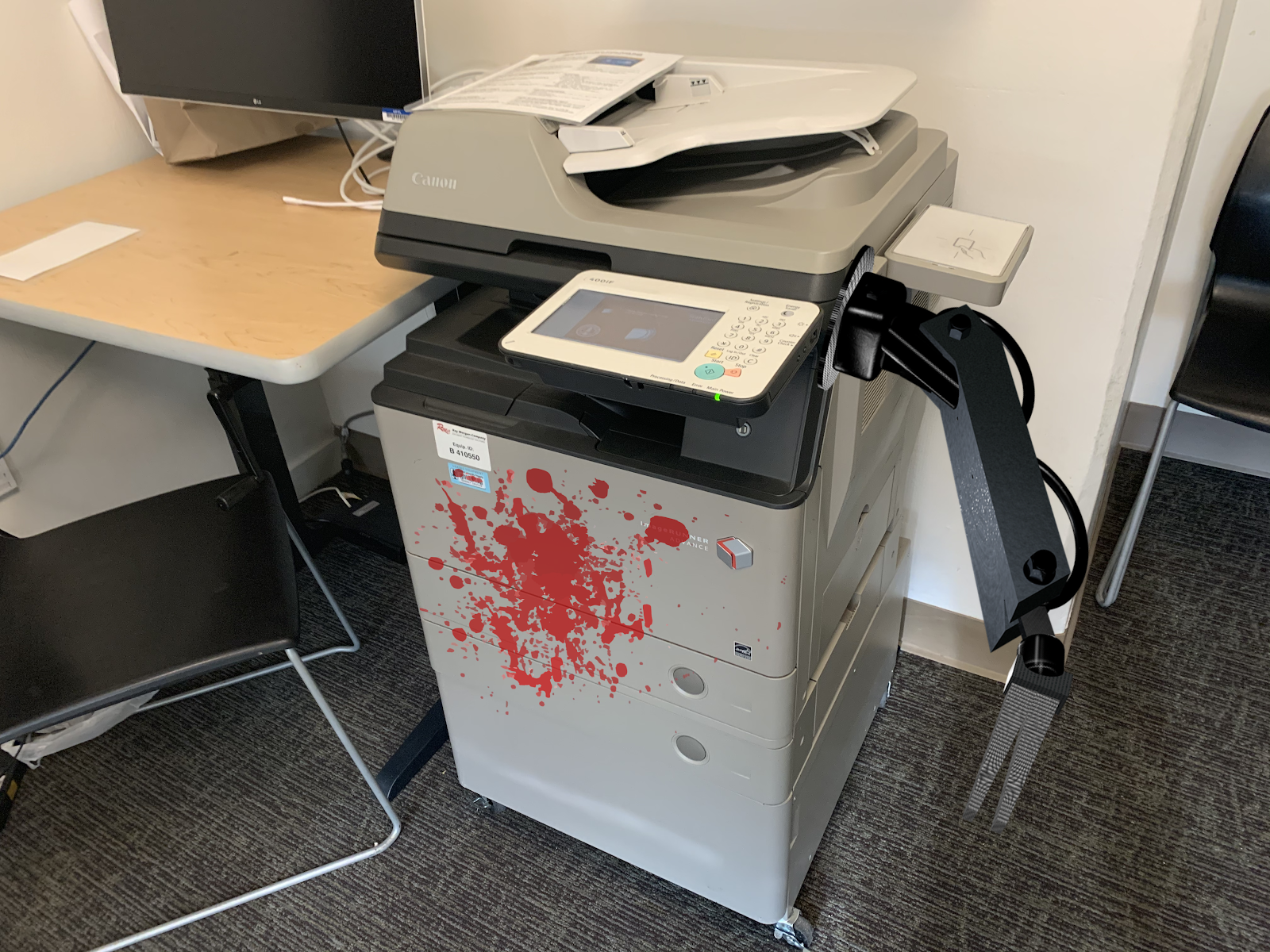Starting this winter quarter, students using cluster printers in libraries and residences will have the choice between the existing card payment system and blood sacrifice to pay the price of printing.
A phased implementation is already in progress, during which each cluster printer on campus will be outfitted with robot arms capable of drawing blood. While still awaiting FDA approval, the arms have punctured the correct vein with at least 70% accuracy on gelatin models of human arms, making them “probably fine on real people,” according to the Office of the Vice Provost for Technology and Learning (VPTL).
VPTL boasts the program as an attempt to ease the burden of printing fees on low-income students.
“It’s really about accessibility,” wrote Charlie Gomez, director of communications and marketing for VPTL, in an official statement. “Our low-income students have just as much blood as anybody else. Everybody has pretty much the same amount of blood.”
The Undergraduate Senate held a meeting to discuss the new program, during which questions were raised about the University’s plans for the blood collected. Associate Vice Provost Gheorghe Nosferatu, whose support was a major factor in the program’s approval, was approached to explain how the blood will be used. He refused to comment, instead assuming bat form and flying away.
The meeting also shed light on another concern: whether the printers would be a threat to student safety. Student Senator Carly Du believes the printers “will promote the spread of blood-born illness” and “actively incentivize injury.”
Other students feel the same. Sophomore Glenn Knopf admits to being uncomfortable with the decision, fearing the University won’t be careful enough to “prevent the printers from developing an unstoppable thirst for blood.”
“I disagree. I would not consider them blood thirsty, necessarily,” Gomez responded, “They’re programmed to want blood, sure, but I wouldn’t say they thirst for it. Either way, Cardinal Care is a really comprehensive plan.”
VPTL expects installation to be complete by February.
Editor’s Note: This article is purely satirical and fictitious. All attributions in this article are not genuine and this story should be read in the context of pure entertainment only.
Contact Lana Tleimat at ltleimat ‘at’ stanford.edu.
